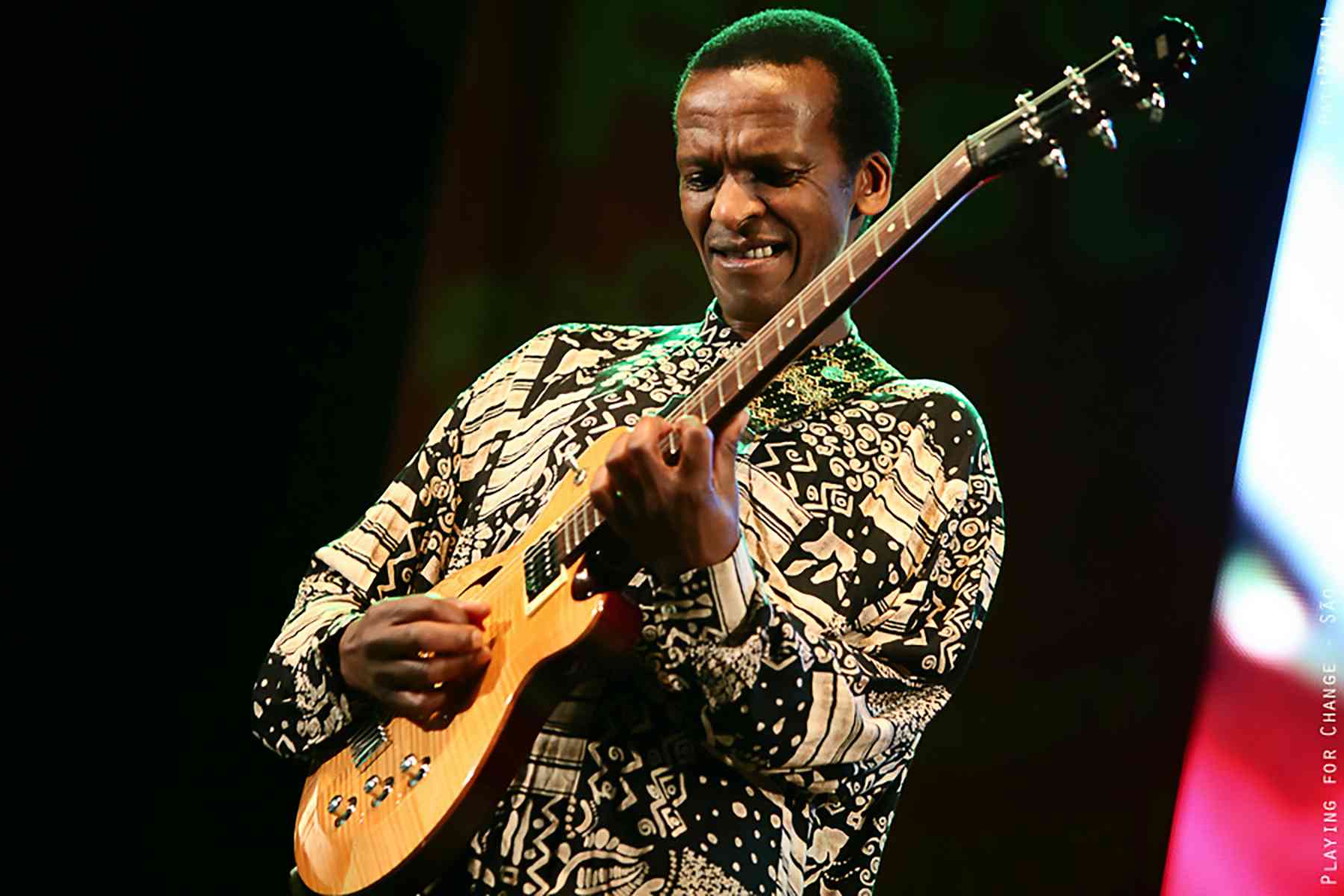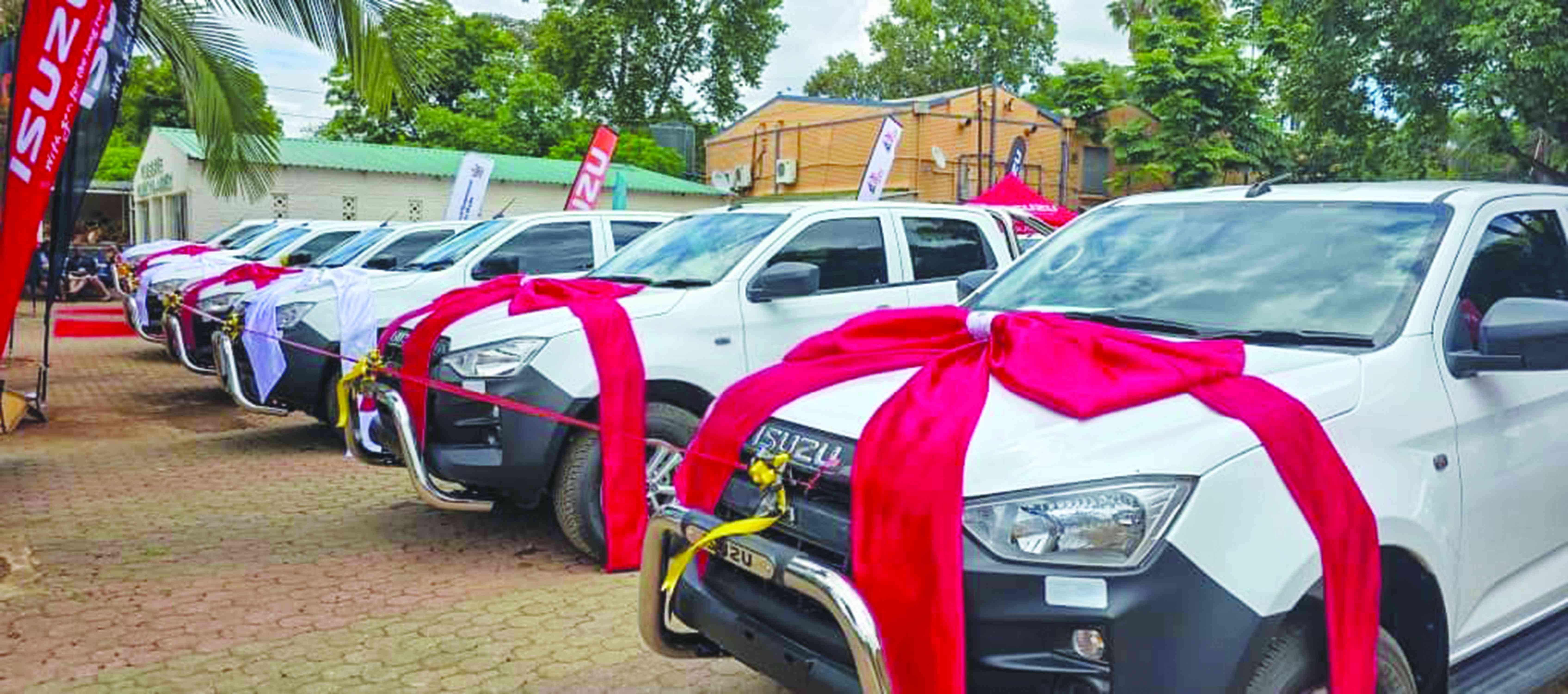
Wow! I have spent the last three days listening to about one hour and ten minutes of Louis Mhlanga’s (pictured) latest 19 track double CD album titled Living for The Living, which features what he rightly terms Zimbabwean solo guitar classics. The double album was recorded under the Apple Music label. This album has left me totally flabbergasted. You do not have to be an Afro-Jazz lover to like this album. It is easy listening when one is driving in Harare’s increasing traffic jams like I do on a daily basis these days.
Many Zimbabweans who have lived through the 1970’s and 1980’s will be familiar with some of the songs on this instrumental album such as Ikosore (Rova Ngoma Ikosore), Kudzidza Kwakanaka, Kure Kwatinobva (KuMakwiro Shamwari), Tanaiwa ne Mvura,, Hwahwa (Hahuna Kunaka), Mdhara Wangu and Dananai) Some of these songs have come up with different titles, but I remember them from my teenage days.
Listed below, are the 19 tracks in order of play:
Songs from Part One:1. DANANAI { Meaning Love each other in Shona, spoken in Zimbabwe}2. ELSIES RIVER3. IF ONLY YOU WERE MINE4. JUST FOR YOU5. KUVA MURUME {Literally saying to be a man means a lot of responsibilities of good behaviour towards other fellow human beings}6. LIVING FOR A LIVING7. MDARA WANGU { My old man, a dedication to all fathers}8. MY FAVOURITE SONG9. SHINGIRIRA {meaning determination}; and10. TELL ME WHY
Songs from Part Two:1 JANUARY EVERYDAY2 MESSENGER3 THE RUNNER4 SECRETS OF PAULINE5 THIS IS WHAT SHE SAID6 TANIWA NEMVURA {meaning we have been soaked in the rain}7 TURN AROUND8 UNIVERSAL ROCK9 WE CLAPPED AND DANCED
There is a mesmerising quality of Mhlanga’s music which gives the listener an intricate tapestry of rhythm, melody and emotion that transcends genres and captivates all its listeners. His guitar style, which he has honed over decades of performances is both classic and unique. The only other musician whom I think plays his guitar close to this style, is America’s George Benson. I remember, one day in London, coming from college one afternoon. I heard from outside my flat, George Benson’s Breezing playing. I assumed that someone had turned on the radio, but to my surprise, when I got inside, it was Mhlanga playing Breezing note for note on his guitar. With praise and admiration, I complimented him for being such a guitar virtuoso. Since then, Louis has never looked back.
Appropriately titled Living for The Living, Louis has admired Zimbabwean life especially the traditionally derived pop music of local musicians such as Thomas Mapfumo’s music. Mhlanga has successfully translated local Zimbabwean songs into instrumentals as given into the above titles. Other songs on this 19 track 2024 album include the title track, Living For The Living, Kuva Murume, , Secrets of Pauline, Tell Me Why, The Runner, This is What She Said, Rufaro Nekuimba, My Favourite Song, Zvikuru Hama Dzangu, Mdhara Wangu, Turn Around, Shingirirai, We Clapped and Danced, January Everyday and If Only You Were Mine.
The album begins with a laid back guitar work which captures some unaccompanied guitar work on a song Mhlanga titled Dananai, which is followed by Elsie’s River. Like most of the songs on this album, this track is only accompanied by Mhlanga’s solo guitar. Nothing else. They could have been recorded from his bedroom. It is only towards the end that one feels studio recording due to the accompaniment of bass, percussion, keyboards cello, violin steel pans, nylon strings, claps and drums.
- Daily life struggles reflected in Burning Figure
- Baker’s art work inspired by personal experiences
- NGZ to honour winning finalists
- Stage set for visual arts awards ceremony
Keep Reading
These songs which some may be familiar with, are more vivid in their arrangements, more volatile in their performances. As resourceful a songwriter as Louis may be — with a casual lyricism in Shingirirai, that can turn a plainspoken phrase into a lighter-raising chorus — Louis always has a punchy riff on hard, or a trenchant guitar tone, his master piece.
On this album, Mhlanga has interacted with many well known and accomplished musicians in South Africa as evidenced by the likes of Busi Mahlasela who played second guitar, bassists Michael Phillips, Jimi Indi and Denny Lallouet; Keyboardist, Randal Skippers; Violin - Kabelo Motlhomi; Percussionists; Inor Sotolongo and Jesus Diaz; Drummers; Sam Mataure, and Rob Watson; on Cello, Kutlwano Masote; Violin: Kabeo Mtlhomi ; on steel pans — Andy Narell; cello — Kutlwano Masote; accordion — Regis Gizavo; on guitar and nylon string guitar and vocals Louis himself.
Just in case you do not know who Mhlanga is, he is the same guy who treated us to Distant Lover a song which some Zimbabweans began to call Amai Chisamba after it was taken as Amai Chisamba’s theme song on her ZBC television show.
Mhlanga (born 10 November 1956) is a Zimbabwean musician based in South Africa, an award-winning guitarist and music producer. Mhlanga taught himself to play the guitar at a young age and is considered one of the best guitarists in Africa.Mhlanga’s career began in the 1970s. Fronting many bands in Zimbabwe, Mhlanga became renowned for his guitar skills, and worked with Zimbabwean acts such as Shaka (with Fred Zindi), Talking Drum ( with Michael Lannas) Ilanga (with Don Gumbo) and Oliver Mtukudzi. Louis eventually headed to South Africa to pursue different musical opportunities, leading to collaborations with renowned South African artistes such as Miriam Makeba, Hugh Masekela, Ray Phiri (another guitar maestro) Sipho Mabuse and Busi Mhlongo.
He admired the traditionally derived pop of local musicians such as Thomas Mapfumo. His first album Shamwari, released in 1990, introduced him as a guitarist who combined African pop and jazz. In 1999, a live duo recording with Mahlasela resulted in the album Vusi and Louis Live at the Bassline.In April 2000, Mhlanga produced Vusi Mahlasela’s fourth album and also appeared on it.
In his international ventures, Mhlanga is also on the album Place of Hope, which contains collaborations with famous Jazz artistes such as George Duke, James Ingram, Al Jarreau, and Dianne Reeves. He is also on Fire in the Engine Room by Andy Narell. Following their South African tour, they released the album Live in SA.
He pursued a music engineering course in the United Kingdom in the 1980s. There he met Zeke Manyika, a Zimbabwean drummer who had joined the popular indie/rock Scottish Group called Orange Juice. That afforded him a chance to work with the internationally acclaimed Scottish outfit, from Glasgow which was quite popular between 1979 and 1985. On his return to Zimbabwe he worked at the Baptist music studio as a sound engineer. Mhlanga recorded the solo albums Mukai and Music Ye Africa with Jethro Shasha, both at Shed Studios in Harare. In 2001, he assembled The Louis Mhlanga Band with musicians who were influenced by jazz. The band was invited by SAFM, a South African radio station, to perform at the National Arts Festival. The group released the album Shamwari.
Mhlanga has produced albums by Thomas Mapfumo, Nigerian King Sunny Ade, and South African Vusi Mahlasela. A former theatre director, Mhlanga ran Zimbabwe’s Ethnomusicology Trust, where he was in charge of developing national teaching programmes for traditional and contemporary Zimbabwean music. He also spent a year in the Netherlands. As the musician-in-residence at the Royal Dutch Conservatory of Music, he taught African guitar courses and recorded albums with bassist Eric van der Westen, one of which also included Malian guitarist and singer, Habib Koite.
Indeed, Louis Mhlanga is an artist whose talents defy the confines of genre. With a career spanning over four decades, Mhlanga has enchanted audiences around the globe with his masterful guitar work, uniquely expressive solos and his innovative blend of jazz, pop, and R&B. He has risen up to international superstardom which is a testament to his relentless dedication, unparalleled skill, and the universal appeal of his music.
- Feedback: [email protected]







